Supermicro AS-5014A-TT Topology
At the heart of the system is the Supermicro M12SWA-TF motherboard. Here is the block diagram for that motherboard.
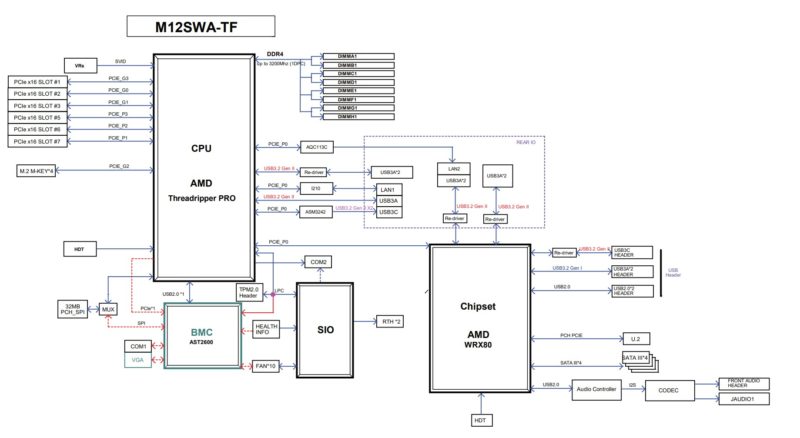
Here, perhaps the most interesting thing is that the M.2 slots all come directly from the CPU. The U.2 goes through the AMD WRX80 chipset. It is quite impressive to see just how much PCIe capacity there is in the platform.
Here is what the system topology looks like:
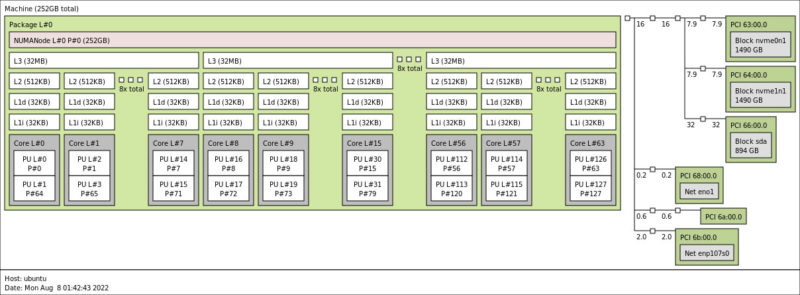
Next, let us get to management.
Supermicro AS-5014A-TT Management
We have covered Supermicro’s IPMI solution many times. Perhaps the most significant feature of this system is that it has Supermicro’s ASPEED-based IPMI/ Redfish management solution. Some other vendors do not have this. As a result, one can manage this system like a server. For those using this workstation as a pedestal server for machine learning/ AI GPUs, this can be managed like a server but in a more office-friendly form factor.
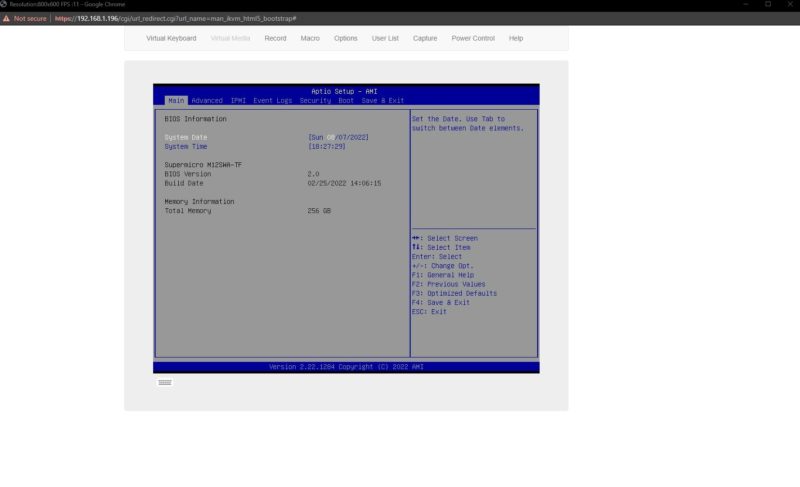
Using the solution, we get out-of-band management, including the HTML5 iKVM.
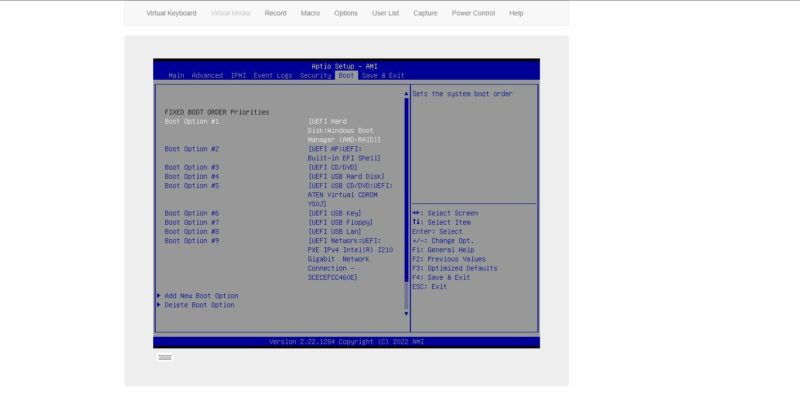
While monitoring and configuring while the system is being used as a traditional workstation are great with this solution, it gets better over time. This high-end system can live a second useful life as a workgroup server seamlessly after it is done being someone’s primary workstation. Many STH’ers who grew up in the 1990’s and early 2000’s remember the Sun workstations that were colocated in cubicles and used as workgroup servers. That model is still alive and well today, except Supermicro has a real server solution to manage it.
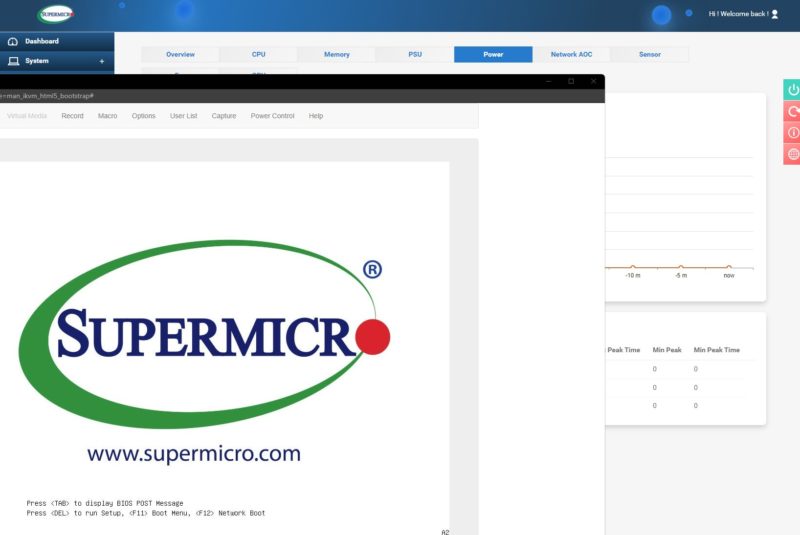
Next, let us get to the performance.
Supermicro AS-5014A-TT Performance
Seeing 128 threads on a single-socket server is always great, but we wanted to briefly discuss performance.
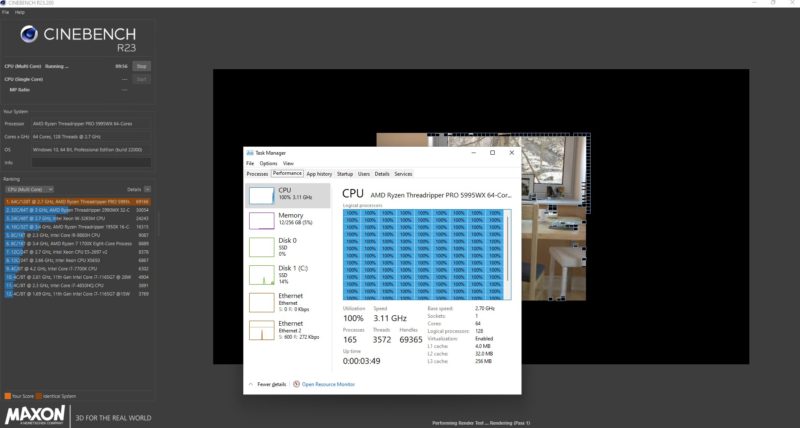
At the 64-core SKU level, AMD is still only competing with its previous generation, the Threadripper Pro 3995WX (that also works in the Supermicro AS-5014A-TT. The newer TR PRo 5995WX is a noticeable level faster. 20% may not seem like a lot initially, but that is like the previous 3995WX generation adding 12-13 more cores.
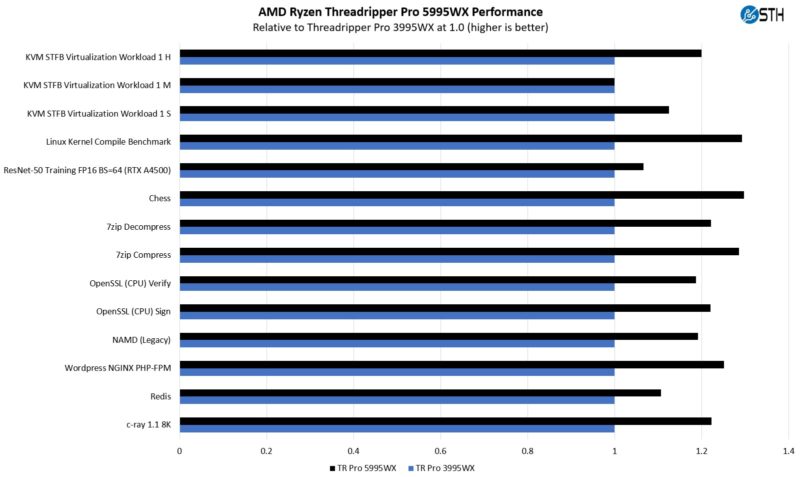
We also tested the solution against the Lenovo ThinkStation P620 since that is an air-cooled solution. On the initial runs, before the machines warm up, they are very similar in terms of performance.
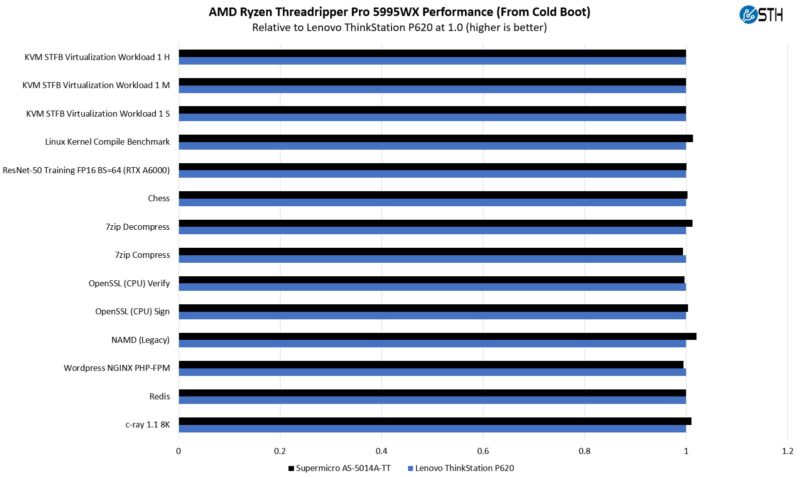
Running them in heat soaked conditions, the Supermicro system’s liquid cooling is superior to Lenovo’s air cooling and that has a notable impact on performance:
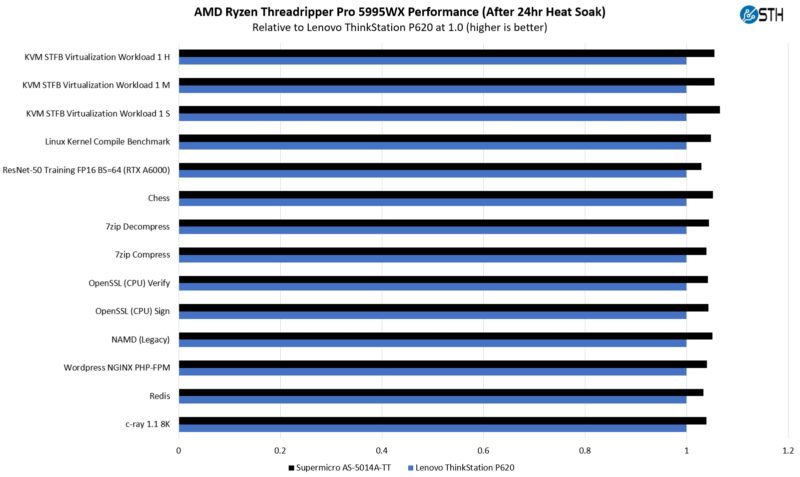
That combined with the additional expansion made this our top pick in the Supermicro versus Lenovo head-to-head in this segment.
Next, let us discuss power consumption before concluding our review.




Nice. Good PCIe slot layout, accomodate two GPU without blocking other slots. Some ppl (me for example) cannot have too many GPUs in a machine, it’d be great if a revision of the case had off board physical mounting for a couple more GPU to be connected with riser cables.
Nevertheless compared to, say, certain other mfr’s two slot TR Pro offerings this is brilliant.
That’s a sharp looking workstation case.
Would like to see these real Chess bench nodes/sec. numbers!
Nice reviews as always..
Yes – nice workstation – I just bought one. The only thing I really miss (so far) is the PMBUS for the power supply – it doesn’t support this. So, no monitoring power usage via IPMI. Which I do miss.
Also, had to move a NVIDIA 3060 grade consumer grade card around in the PCIE slots until I found the one where it stopped acting “flaky” – of course this could be the card itself.
One last gripe, SuperMicro store does NOT carry the conversion kit to have this rack mounted, you have to purchase it (if you can find it) at other outlets.
Overall, I do give it a thumbs up 🙂
these machines are onerous overpriced anachronisms from the get go due to pricing and marketing decisions – they will only be around for a little while due to these factors – the future of hedt is in a lull but the lull won’t last long – think arm and tachyum options plus clustering – you can get many machines for the same price in diy mode and surpass overall performance – this is not innovative or clever but more like unclear. final answer
@opensourceservers most people or rather companies running these have production workloads where expert salary and software licences are the main cost factors. Even if such a system is changed every ~2-3 years it will be <= 10% of the total costs related to that employee. What you are talking about with arm clusters is a totally different type of scenario.
These would probably be monster scale-up mixed usage database servers. I’d love to see a set of SQL benchmarks (but the MS SQL enterprise license cost of such a system would be scary). If your workload doesn’t shard and parallelize well, a classic SQL server scale up system can perform much better at a lower cost, and these can have huge RAM and extremely fast storage direct attached, with even more storage as NMVEoF with DPUs
@David Artz. Can you point me towards a suitable rack mount kit vendor please.